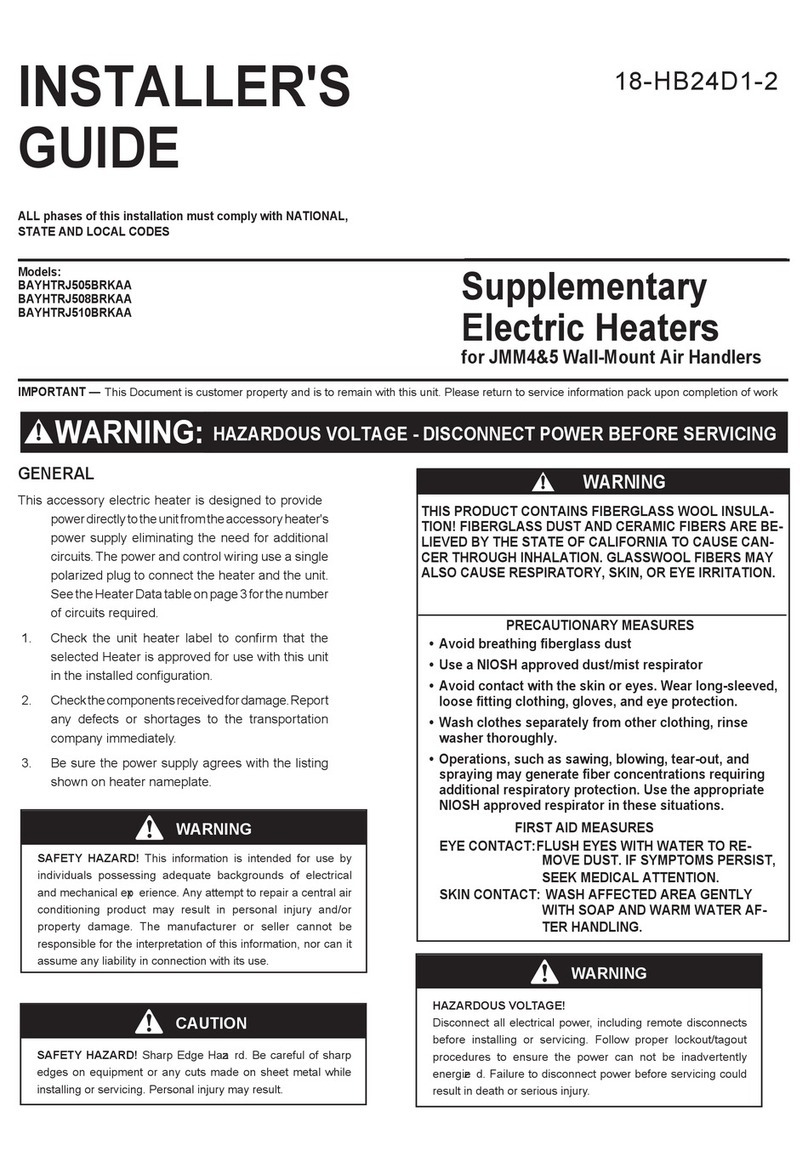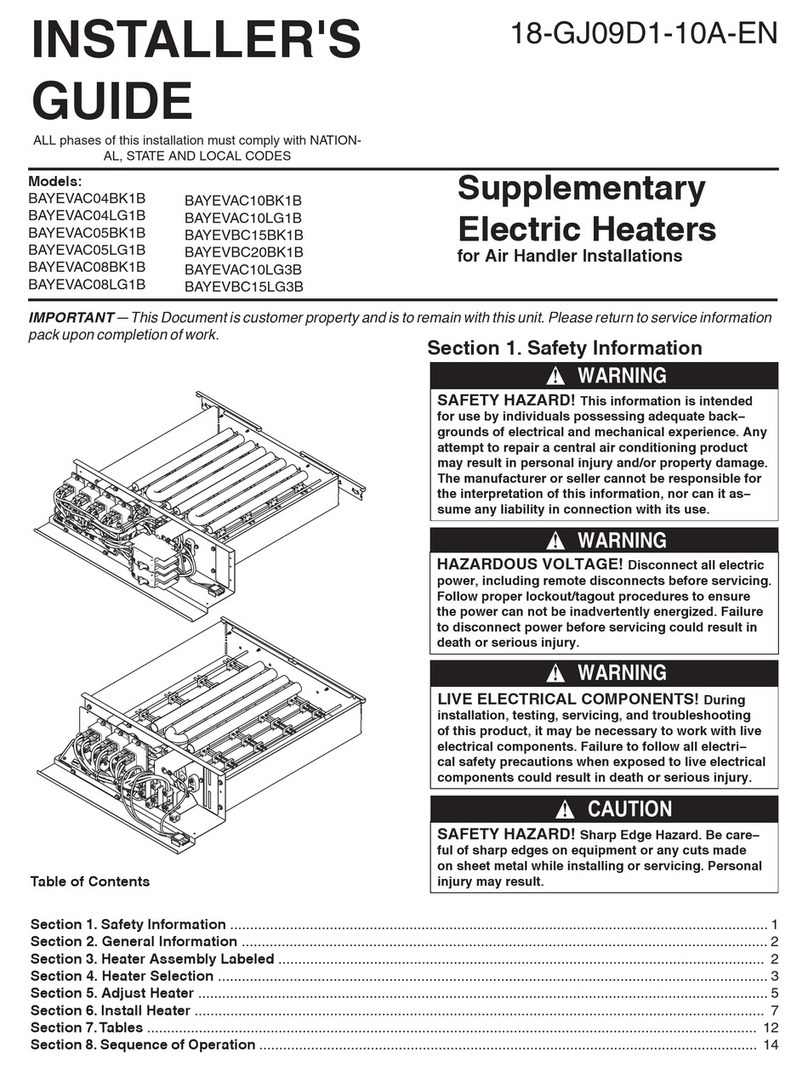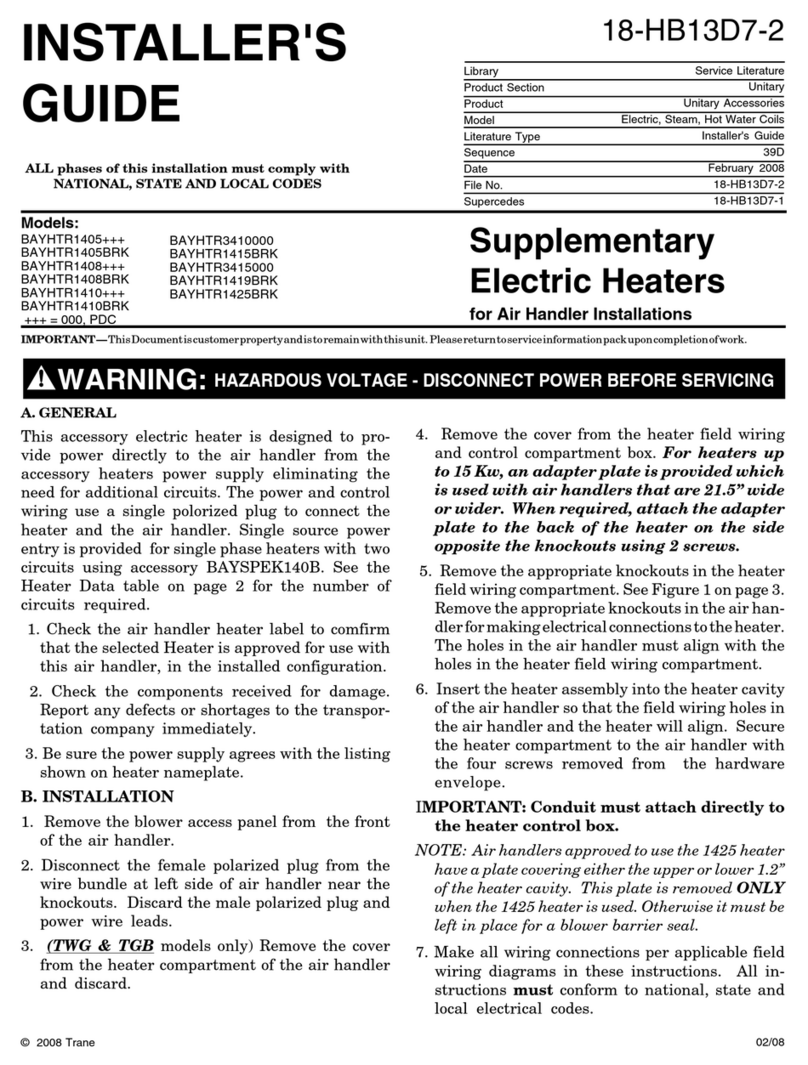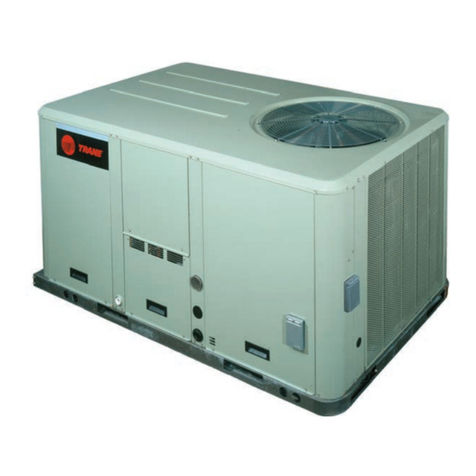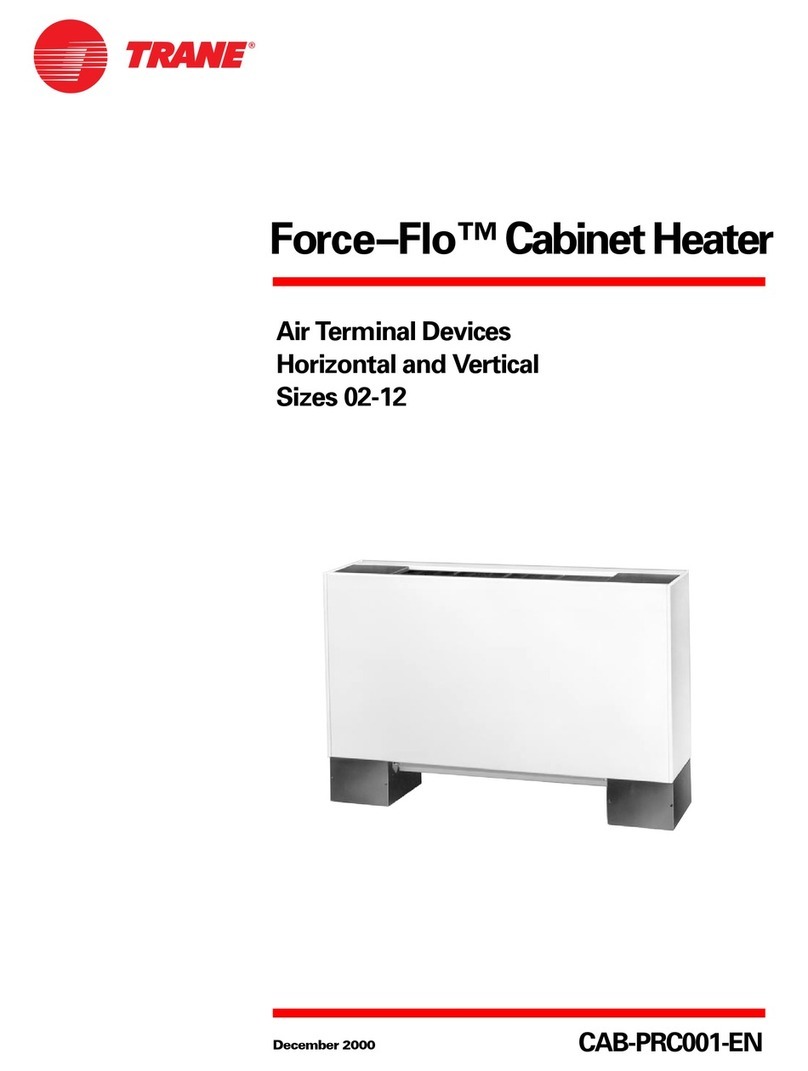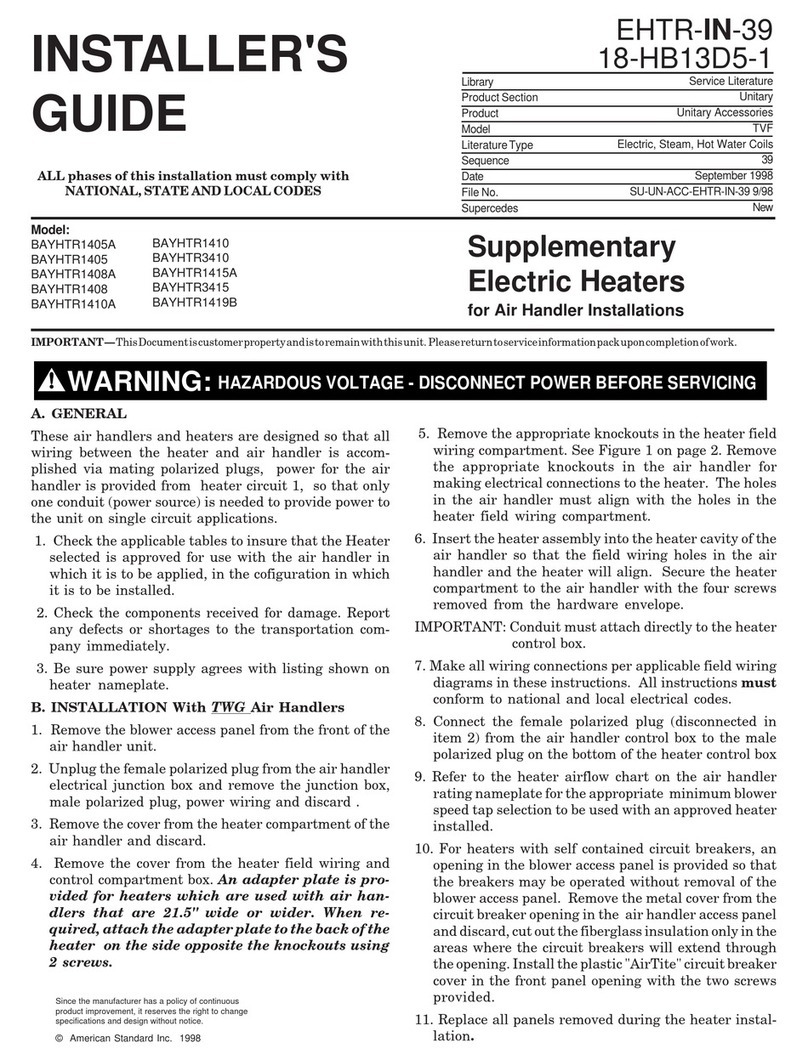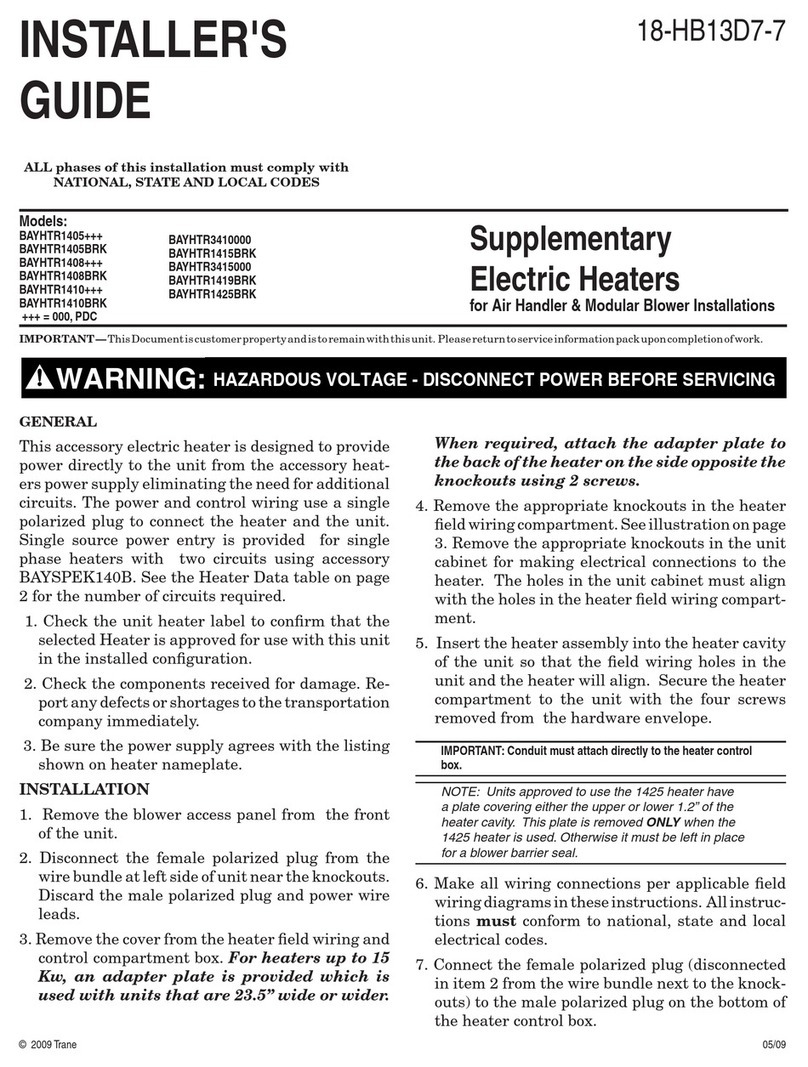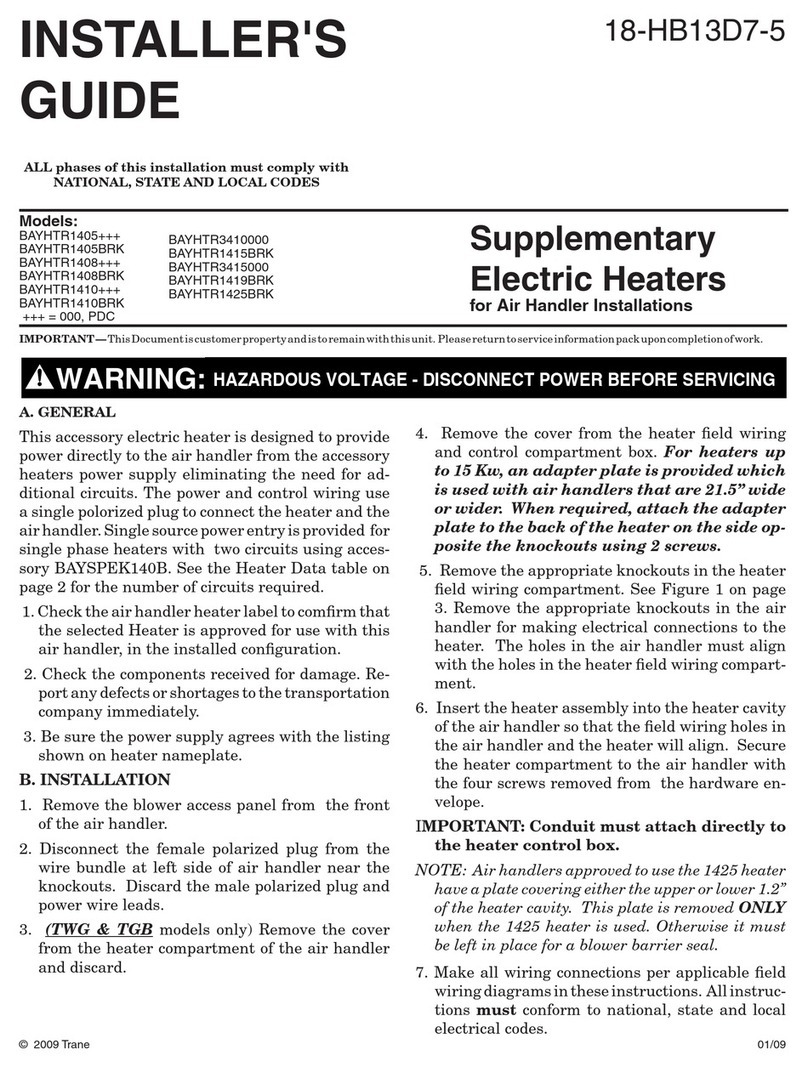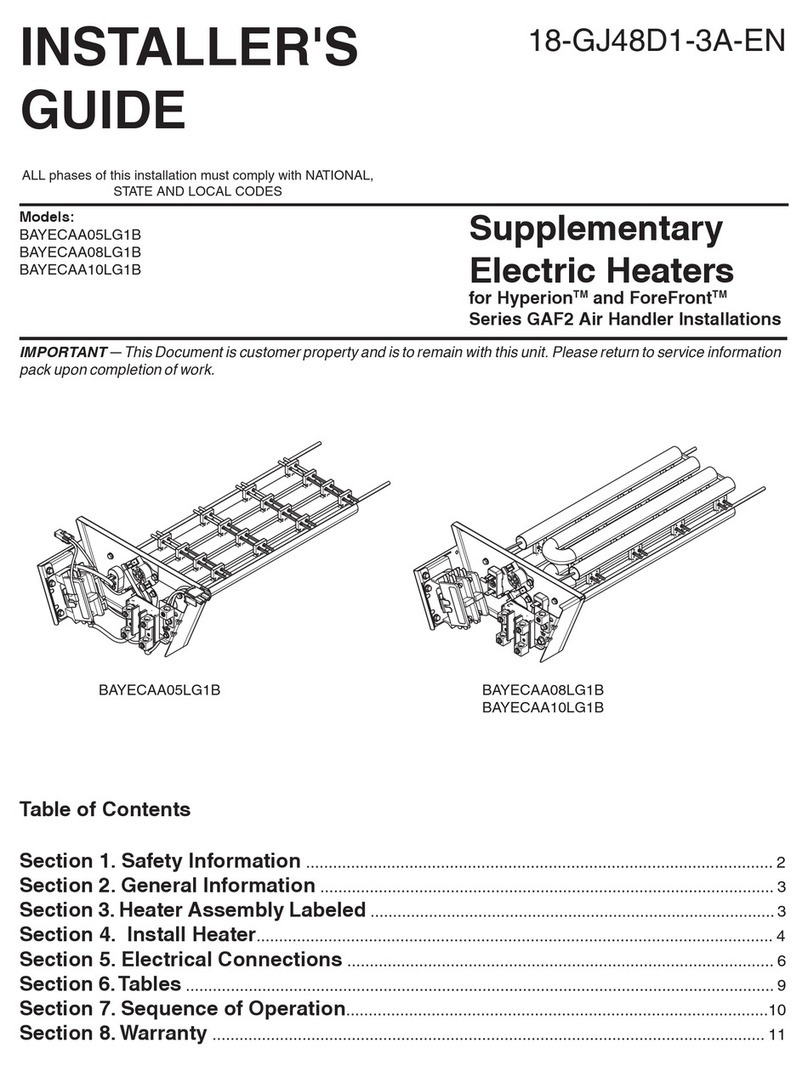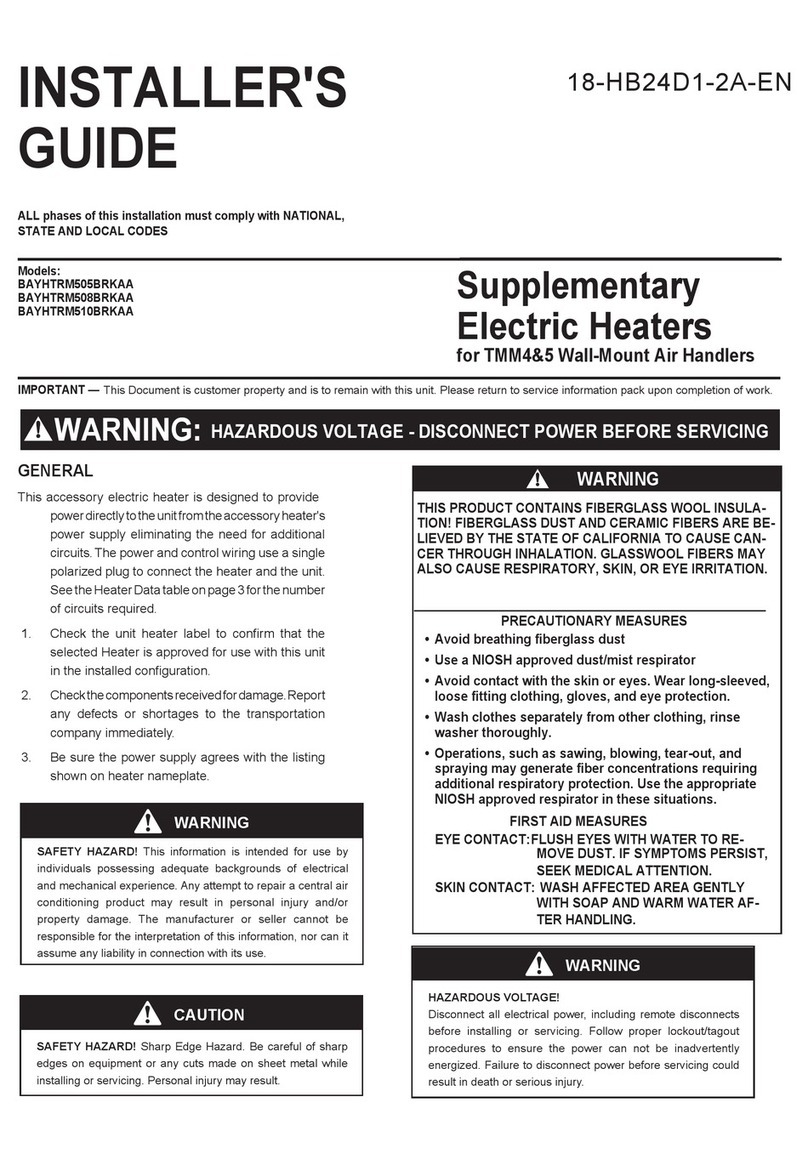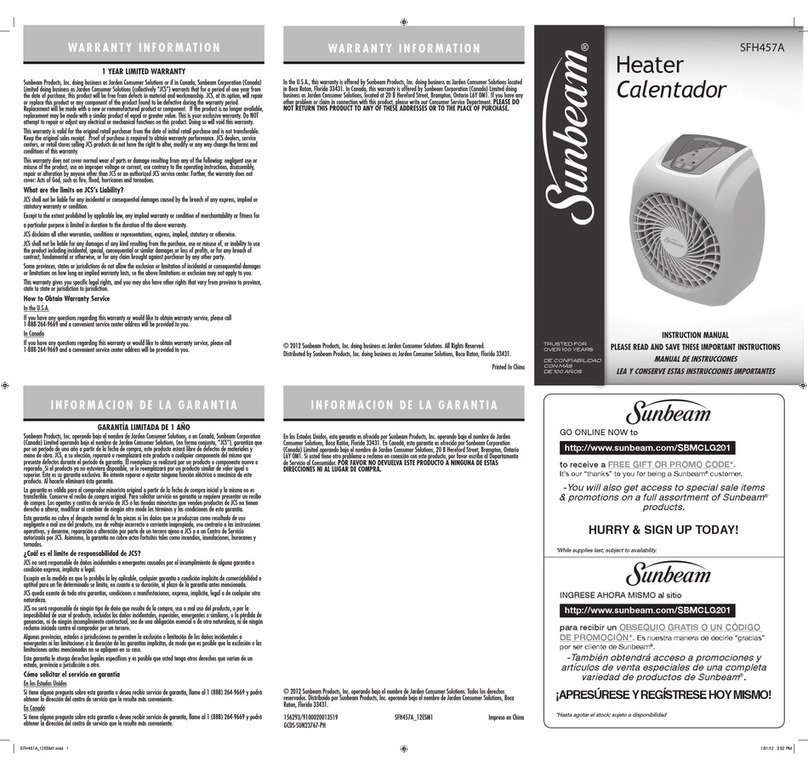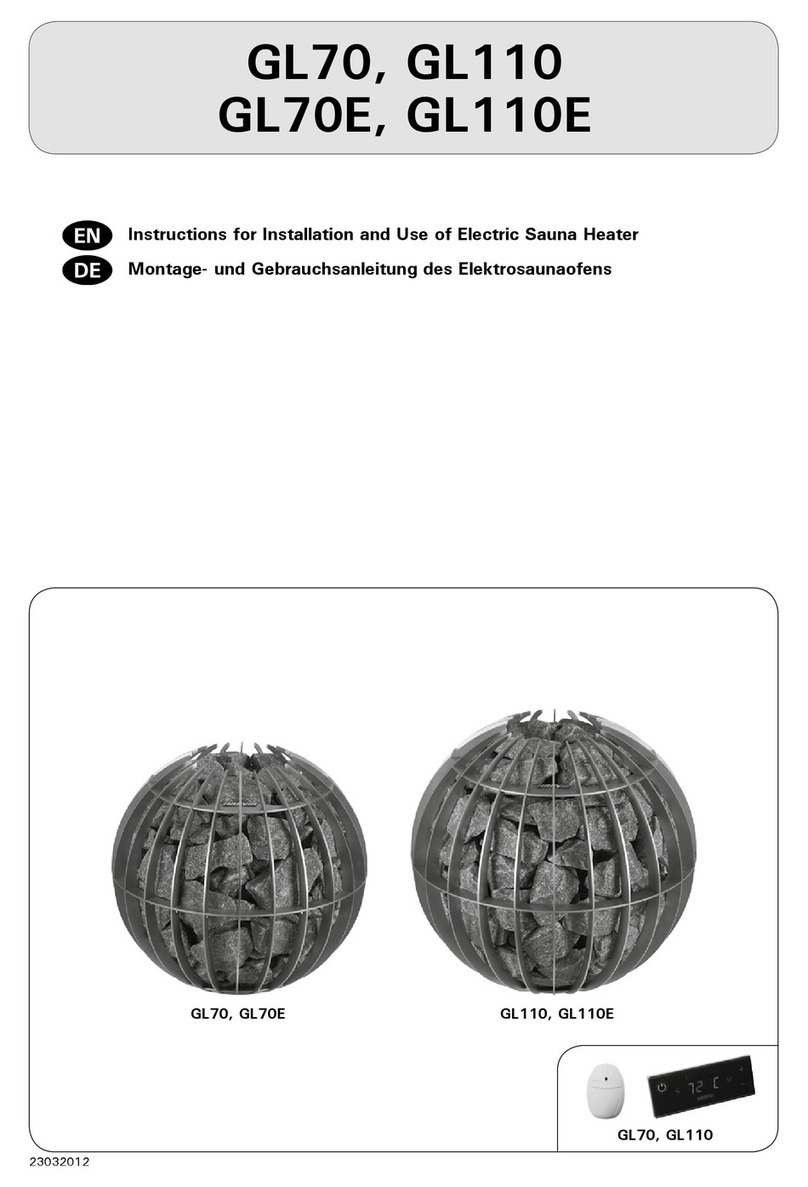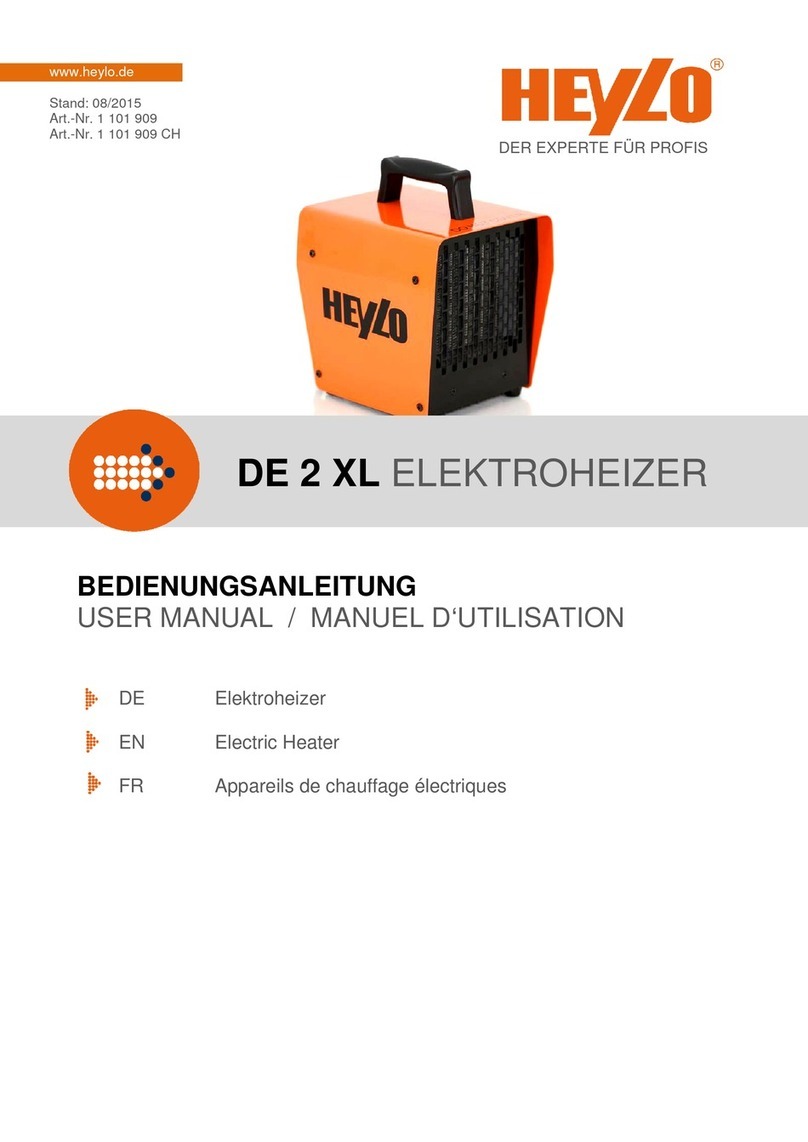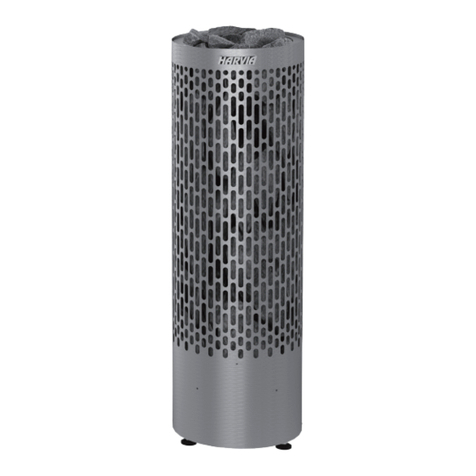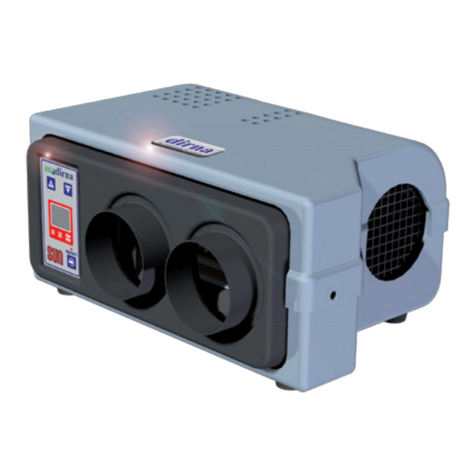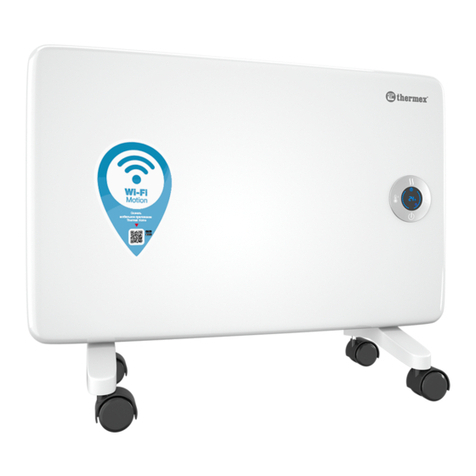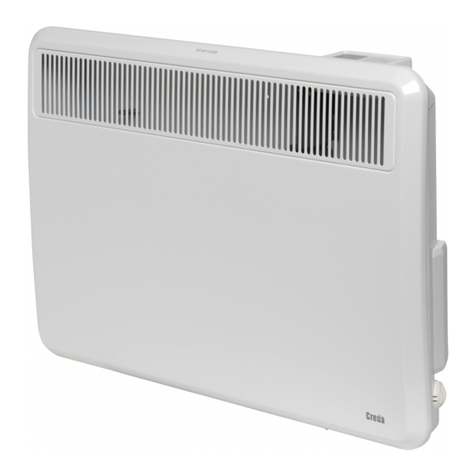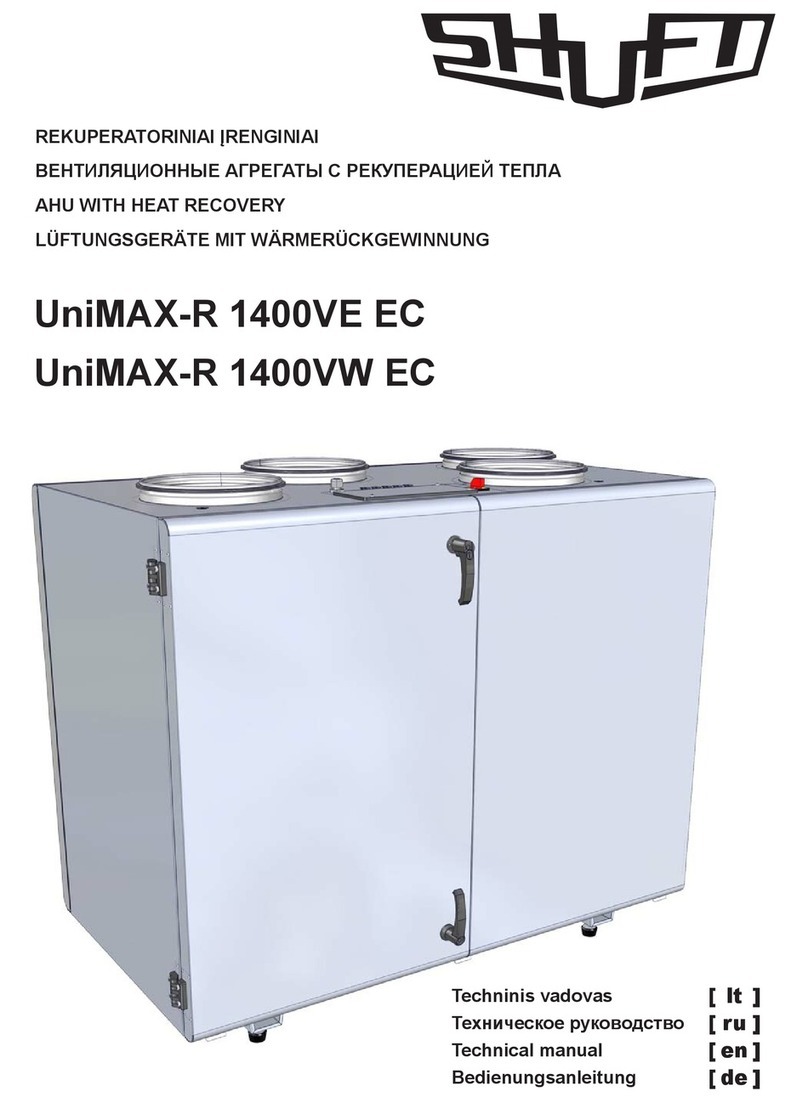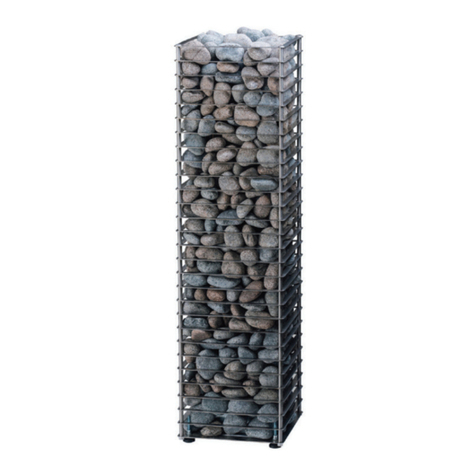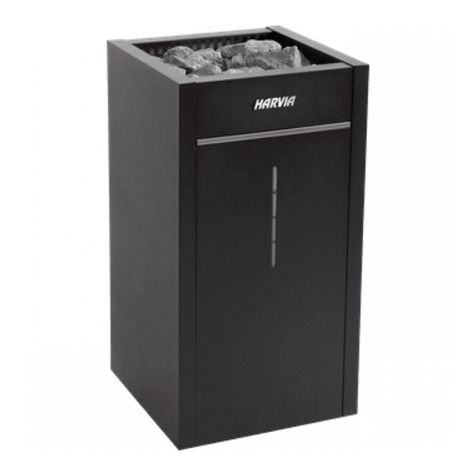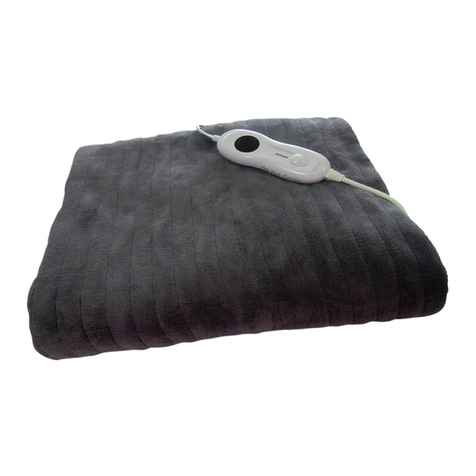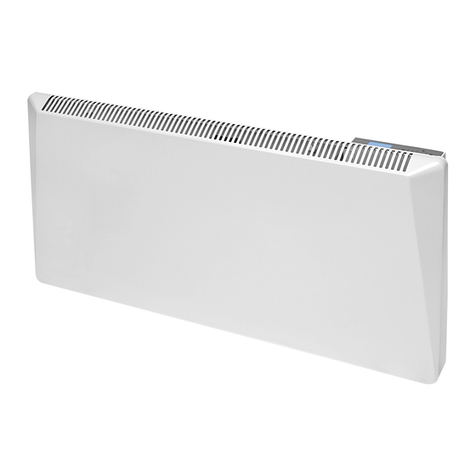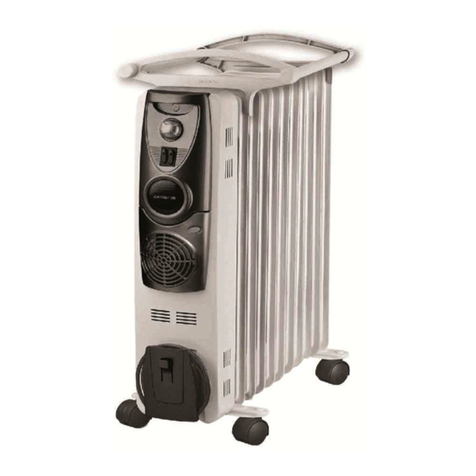
25 kW Supplementary
Electric Heater
for Air Handler Installations
INSTALLER'S
GUIDE
IMPORTANT—This Document is customer property and is to remain with this unit. Please return to service information
pack upon completion of work.
ALL phases of this installation must comply with NATION-
AL, STATE AND LOCAL CODES
18-GJ28D1-1C-EN
Models:
BAYEVCC25BK1B
Table of Contents
Section 1. Safety Information ....................................................................................................................................... 1
Section 2. General Information..................................................................................................................................... 2
Section 3. Heater Assembly Labeled ........................................................................................................................... 2
Section 4. Adjust Heater ............................................................................................................................................... 3
Section 5. Install Heater ................................................................................................................................................ 5
Section 6.Tables .......................................................................................................................................................... 11
Section 7. Heater Operation ....................................................................................................................................... 12
Section 1. Safety Information
SAFETY HAZARD! This information is intended
for use by individuals possessing adequate back-
grounds of electrical and mechanical experience. Any
attempt to repair a central air conditioning product
may result in personal injury and/or property damage.
The manufacturer or seller cannot be responsible for
the interpretation of this information, nor can it as-
sume any liability in connection with its use.
LIVE ELECTRICAL COMPONENTS! During
installation, testing, servicing, and troubleshooting
of this product, it may be necessary to work with live
electrical components. Failure to follow all electri-
cal safety precautions when exposed to live electrical
components could result in death or serious injury.
SAFETY HAZARD! Sharp Edge Hazard. Be care-
ful of sharp edges on equipment or any cuts made
on sheet metal while installing or servicing. Personal
injury may result.
HAZARDOUS VOLTAGE! Disconnect all electric
power, including remote disconnects before servicing.
Follow proper lockout/tagout procedures to ensure
the power can not be inadvertently energized. Failure
to disconnect power before servicing could result in
death or serious injury.
